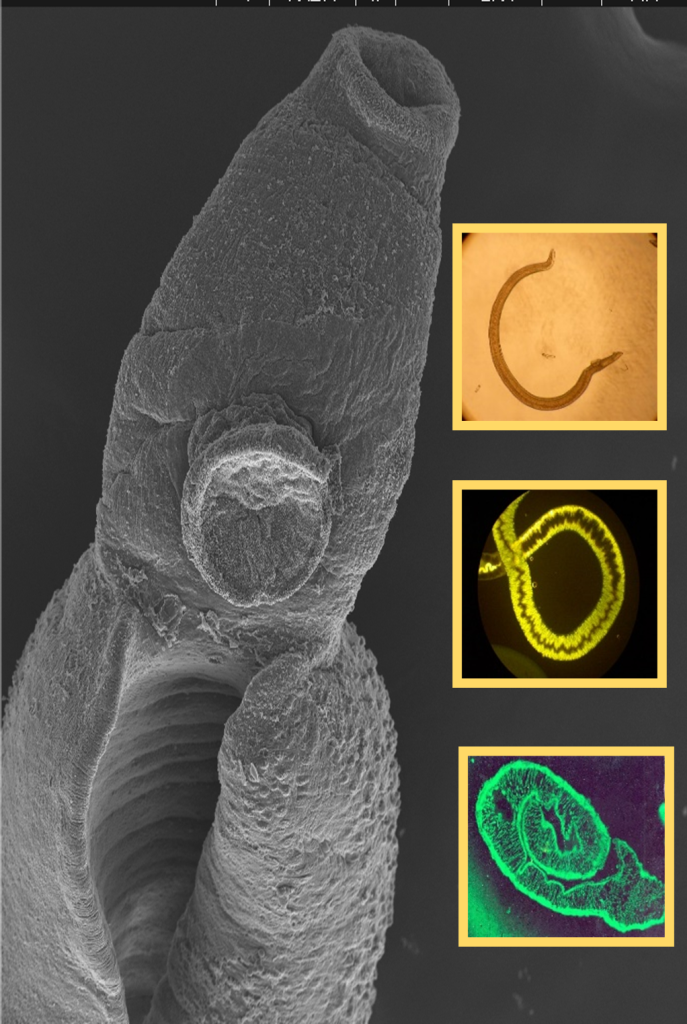Research
Larval schistosome (schistosomulum) stained green, gut stained blue (left most); Adult male/female schistosome couple (left center); Scanning electron micrograph of the front of an adult male schistosome – the parasite’s suckers are clearly seen (right center); section through the anterior of a larval schistosome (miracidium) (right).
The Molecular Helminthology Laboratory principally studies the host-schistosome interface to better understand how these remarkable worms can thrive within immune-competent mammalian hosts for years, even decades.

With funding mostly from the National Institutes of Health (NIH), we study the makeup of the schistosome tegument (skin). This is a site of intimate host-parasite interaction; some nutrients are taken up directly across the body surface of the parasites in the bloodstream and environmental sensing occurs at the surface. There is great interest in identifying and characterizing molecules at the host-exposed parasite surface for two main reasons: (1) To gain a better understanding of surface biochemistry and cell biology and, (2) To identify molecules accessible to host immune effectors at the parasite surface. These molecules are important targets for new drugs as well as vaccine candidates.
In collaboration with Tufts Professor Dr. Charles Shoemaker, we are developing nanobodies (antibody fragments derived from alpacas) that bind to and inhibit essential schistosome surface enzymes. This approach could form the basis of a new anti-schistosome therapy.
In collaboration with The Broad Institute of MIT and Harvard, we are probing chemical libraries for compounds that block key schistosome surface proteins and kill the worms.
In collaboration with Moderna Inc, we are testing mRNAs encoding critical tegumental antigens as anti-schistosome vaccines.
We present our research findings widely including at the Annual Meeting of the New England Association of Parasitologists


